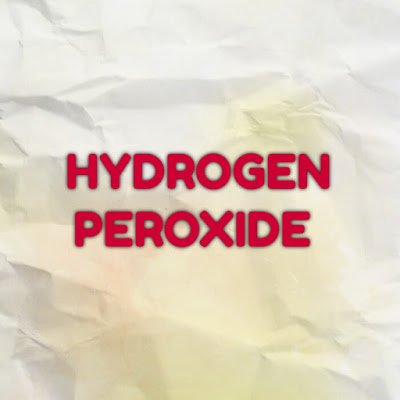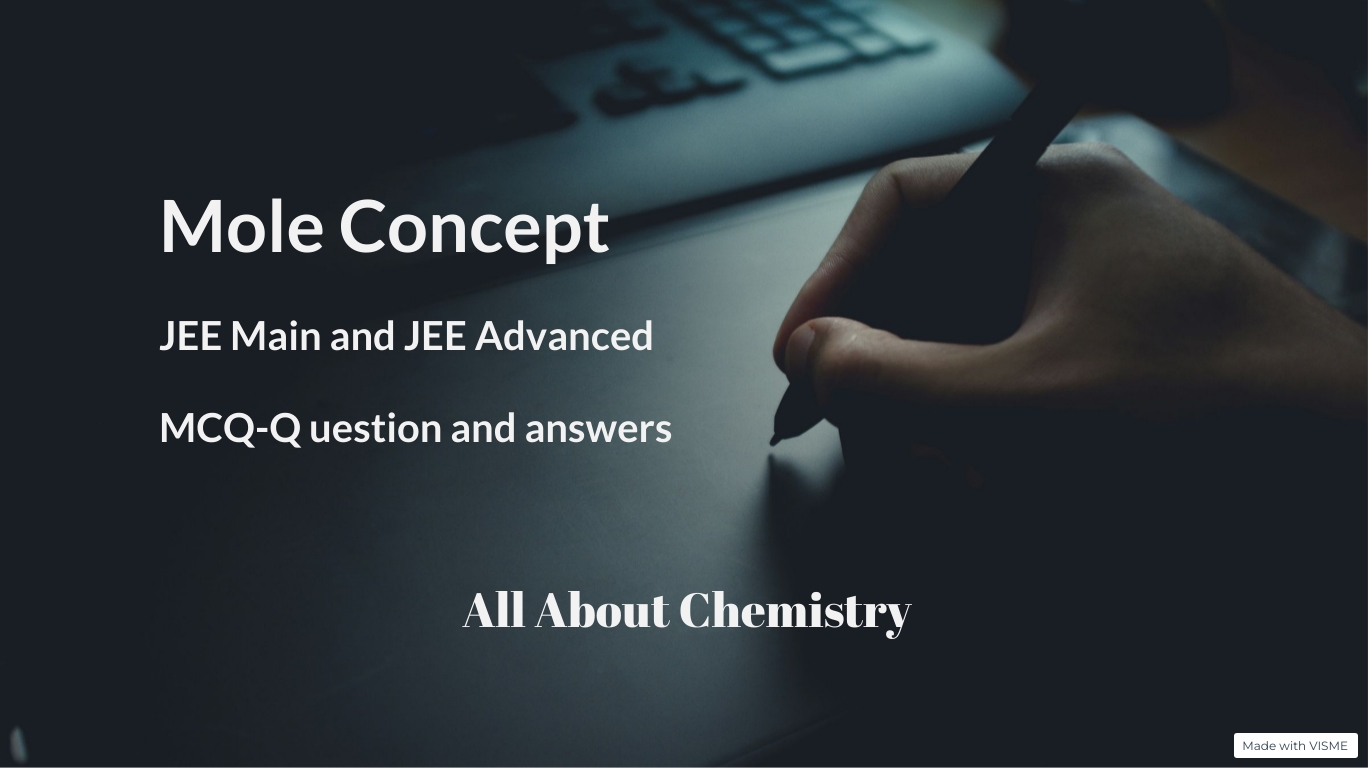Hydrogen peroxide was discovered by the French chemist J.L.Thenard in 1818. It is an unstable compound. Traces of hydrogen peroxide are obtained in air and in water.
Preparation:
Laboratory preparation of hydrogen peroxide:
Principle: Hydrogen peroxide can be prepared in the laboratory by adding a thin paste of hydrated barium peroxide (prepared in ice cold water) to an ice cold solution of 20% sulphuric acid.
BaO2.8H2O+H2SO4 →BaSO4 +H2O2+8H2O
Procedure: A thin paste of hydrated barium peroxide is prepared by dissolving finely powdered barium peroxide with a small amount of water in a beaker. Dilute sulphuric acid is prepared by adding 1 volume of conc. sulphuric acid to 5 volume of water taken in another beaker. Both the beakers are cooled in freeing mixture. Now ice cold paste is slowly added to ice cold dilute sulphuric acid by constantly stirring with a glass rod till the final solution remains slightly acidic. Insoluble barium sulphate will be precipitated with a transparent liquid above it. It is filtered. The filtrate is an aqueous solution of hydrogen peroxide containing 10-20% of hydrogen peroxide.
Purification: Although water is more volatile than hydrogen peroxide, it is not possible to separate water from hydrogen peroxide by fractional distillation as hydrogen peroxide decomposes to water and oxygen.
2H2O2→2H2O + O2

Dilute H2O2 prepared is concentrated to 50% by slowly evaporating it on a water bath.Then it is further concentrated to 90% in a vacuum desiccator using conc sulphuric acid as a dehydrating agent.
Further concentration to 99% is done by distillation under reduced pressure.
The last trace of water is removed by cooling in a freezing mixture containing dry ice and ether when 100% pure crystalline hydrogen peroxide separates out. These crystals are then, removed, dried, and melted.
- In the above process anhydrous barium peroxide is not taken as it form an insoluble coating of barium sulphate and stops the further reaction. Hence BaO2.8H2O is taken ( as paste).
- Hydrogen peroxide produced in this process contains Ba2+ (as barium persulphate, BaS2O8) act as a catalyst in the decomposition of H2O2. Hence it cannot be stored for a long time.
- Phosphoric acid is preferred over sulphuric acid as the former removes any impurities (which act as a catalyst in the decomposition of hydrogen peroxide) present as insoluble phosphate. And hence H2O2 solution produced can be stored for a long time.
3BaO2 + 2H3PO4 →Ba3(PO4)2 + 3H2O2
- Conc. Sulphuric acid cannot be used the above process as it oxidises H2O2.
H2SO4 + H2O2→SO2 + 2H2O + O2
- Conc. or dil.HCl reacts with BaO2 to produce BaCl2 and H2O2. But as barium chloride is soluble in water, it is not possible to separate BaCl2 from the aqueous solution of H2O2. Thus conc. or dil.HCl is not used to prepare H2O2.
- Nitric acid cannot be used in the above process as it oxidizes H2O2.
- The final solution produced in the above reaction is kept slightly acidic as acid acts as a negative catalyst in the decomposition of hydrogen peroxide.
- The temperature of the acid and barium peroxide is kept at 00C as heat accelerates the decomposition.
- Hydrogen peroxide can also be prepared from barium peroxide by rapidly bubbling carbon dioxide through a thin paste of BaO2.
Merck’s process:
Hydrogen peroxide is prepared by passing carbon dioxide through finely powdered barium peroxide suspended in water-cooled at 00C.
BaO2+CO2+H2O→BaCO3 +H2O2
From sodium peroxide:
Hydrogen peroxide is prepared by reaction a calculated amount of sodium peroxide to 20% sulphuric acid at 00C. At low temperature sodium sulphate separates out as crystalline Glauber’s salt (Na2SO4. 10H2O) which is removed by filtration. The filtrate obtained is the aqueous solution of hydrogen peroxide.
Na2O2 + H2SO4 →Na2SO4 + H2O2
In the above process calculated amount of Na2O2 is used as excess of Na2O2 will react with water to produce NaOH which act as positive catalyst in the decomposition of H2O2.
Na2O2 + 2H2O→2NaOH + H2O2
By electrolytic process:
Electrolysis of cold 50% sulphuric acid using Pt anode, graphite cathode and at high current density produces peroxodisulphuric acid. Peroxodisulphuric acid formed on hydrolysis yield 30% H2O2 under reduced pressure.
H2SO4 →H+ + HSO4–
At cathode:
2H+ + 2e– → H2
At anode
2HSO4– – 2e– → H2S2O8(Peroxodisulphuric acid)
2H2SO4 → H2S2O8 + 2H+ + 2e–
H2S2O8 +2H2O→ 2H2SO4 + H2O2.
Recent modification:
Recently a mixture of H2SO4 and ammonium sulphate is electrolysed instead of 50% sulphuric acid in order to obtain a better yield.
(NH4)2SO4 + H2SO4 →2NH4HSO4
NH4HSO4→NH4SO4– + H+
Cathode: 2H+ + 2e→2H→H2
Anode: 2NH4SO4– -2e→(NH4)2S2O8
(NH4)2S2O8 + H2O →2NH4HSO4 + H2O2
Auto oxidation process:
In this process, 2-ethyl anthraquinone is first dissolved in mixed organic solvents( benzene and cyclohexane) and then hydrogen gas is passed through the solution in presence of palladium catalyst when 2-ethyl anthraquinone is reduced to 2-ethyl anthraquinol.
2-ethyl anthraquinol thus produced is oxidized by passing air through the solution to 2-ethyl anthraquinone and hydrogen peroxide. This modern method for the preparation of hydrogen peroxide is convenient and economical.

From 2-Propanol:
H2O2 can also be prepared commercially by partial oxidation of 2-propanol. Little hydrogen peroxide is added to initiate the reaction.

Storage of hydrogen peroxide Solution:
Hydrogen peroxide easily undergoes dissociation thus it should be stored with utmost precaution.
- It is kept in paraffin wax-coated glass or plastic or Teflon bottles as rough surface and alkali oxides of glass decompose it.
- The container should be kept in airtight and dark-colored bottle as light catalyze its decomposition.
- Negative catalyst such as glycerine, acetanilide, phosphoric acid, urea, alcohol is often added as a stabilizer.
Structure:
Hydrogen peroxide has an open book structure .Two oxygen atoms remain bonded to each other by peroxide linkage (-O-O-).
| Phase | Gas | Solid |
| O-O bond length(pm) | 147.5 | 145.8 |
| Dihedral angle between two plane | 111.50 | 90.20 |
| O-H bond length (pm) | 95.0 | 98.8 |
| H-O-O angle | 94.80 | 101.90 |


Physical properties:
| Nature | Thick syrupy liquid |
| Colour | Pale blue |
| Taste | Bitter |
| Melting point | -0.410C |
| Boiling point | 150.20C |
| Density (g mL-1) at 25oC | 1.4425 |
| Viscosity (mPa s) at 20oC | 1.245 |
| Surface tension (mN m-1) at 20oC | 80.4 |
| Specific conductance (Ω.cm) at 25oC | 4 x 10-7 |
| Heat of dissociation (kJ mol-1) | 34.3 |
| Enthalpy of fusion ( J g-1) | 367.52 |
| Dipole moment | 2.26D |
| Solubility | Soluble in water, ether and alcohol |
| Specific heat (J g-1) at 25oC | 2.628 |
| Heat of vapourisation (J g-1) at 25oC | 1517 |
| pKa at 20oC | 11.75 |
| Dielectric constant at 25oC | 70.7 |
Chemical properties:
| Decomposition | Pure hydrogen peroxide is very unstable. It decomposes to water and oxygen in the presence of: 1)Light 2)Heat 3)Pt, Ag, Co, Fe, Cu, Au 4)MnO2 5)Charcoal 6)Rough surface Thus hydrogen peroxide should be kept in an airtight and dark coloured bottle along with negative catalyst like glycerine, acetanilide, phosphoric acid, urea, alcohol etc. 2H2O2→2H2O + O2 ∆G0 = -122.6kJ |
| Acidic nature | An aqueous solution of hydrogen peroxide is acidic (weak). It can turn blue litmus red. H2O2→H+ + HO2– K=1.5 x 10-12 at 298K H2O2→2H+ + O22- K = 1.0 x 10-14 It can form two types of salt, hydroperoxide, and peroxide H2O2 + NaOH→NaHO2 + H2O H2O2 + 2NaOH→Na2O2 + 2H2O |
| Oxidising action | It acts as a strong oxidizing agent in acidic and basic medium. In acidic medium the reactions are- 2FeSO4 + H2SO4 + H2O2→Fe2(SO4)3 + 2H2O 2K4[Fe(CN)6] + H2SO4 + H2O2→2K3[Fe(CN)6] + K2SO4 + 2H2O 2KI + H2SO4 + H2O2→K2SO4 + 2H2O+ I2 K2Cr2O7 + H2SO4 + 4H2O2→K2SO4 + 5H2O + 2CrO5 PbS + 4H2O2→PbSO4 + 4H2O H2S + H2O2→2H2O + S H2SO3 + H2O2→H2SO4 + H2O Hg + H2O2→H2O + HgO SnCl2 + 2HCl + H2O2→SnCl4 + 2H2O HNO2 + H2O2→HNO3 + H2O In basic medium the reactions are- Na3AsO3 + H2O2→Na3AsO4 + H2O Na2SO3 + H2O2→Na2SO4 + H2O MnSO4 + H2O2 + 2NaOH→Na2SO4 + MnO2 + H2O HCHO + H2O2→HCOOH + H2O Cr2(SO4)3 + 3H2O2 + 10NaOH→2Na2CrO4 + 3Na2SO4 + 8H2O 2FeSO4 + 4NaOH + H2O2→2Fe(OH)3 + 2Na2SO4 |
| Reducing action | It acts as a strong oxidising agent in acidic and basic medium. In acidic medium the reactions are- H2O2 + O3→H2O + 2O2 H2O2 + Cl2→2HCl + O2 H2O2 + HOCl→HCl + H2O + O2 MnO2 + H2SO4 + H2O2→MnSO4 + 2H2O + O2 K2Cr2O7 + 4H2SO4+ 3H2O2→K2SO4 + Cr2(SO4)3 + 7H2O + 3O2 2KMnO4 + 3H2SO4 + 5H2O2→K2SO4 + 2MnSO4 + 8H2O + 5O2 In basic medium the reactions are- 2KMnO4 + 3H2O2→2MnO2 + 2KOH + 2H2O + 3O2 Fe2(SO4)3 + H2O2 + 2NaOH→2FeSO4 + Na2SO4 + 2H2O + O2 2K3[Fe(CN)6] + 2KOH + H2O2→2K4[Fe(CN)6]+ 2H2O + O2 PbO2 + H2O2→PbO + H2O + O2 Cl2 + H2O2 + 2KOH→2KCl + 2H2O + O2 NaOBr + H2O2→NaBr + H2O + O2 KIO4 + H2O2→KIO3 + H2O + O2 Ca(OCl)Cl + H2O2→CaCl2 + H2O + O2 Ag2O + H2O2→2Ag + H2O + O2 |
| Bleaching action | Hydrogen peroxide decomposes to produce nascent oxygen which can bleach any coloring matter. H2O2→H2O + [O] Coloring matter + [O] →bleached matter |
| Addition reaction | Hydrogen peroxide adds with ethane to produce Ethylene glycol C2H2 +H2O2 →CH2OH-CH2OH It also forms addition compounds like [KF,H2O2], [CO(NH2)2, H2O2] and [(NH4)2SO4,H2O2] |
Test for hydrogen peroxide:
- When hydrogen peroxide comes in contact with starch KI solution, the solution turns blue.
2KI + 2HCl + H2O2→I2 + 2KCl + 2H2O
I2 + starch→blue substance
- When H2O2 is treated with acidified Titanium sulphate, a yellowish orange colour is produced due to the formation of pertitanic acid (H2TiO2).
Ti(SO4)2 + H2O2 + 2H2O→H2TiO2 + 2H2SO4
- Perchromic acid test: When H2O2 is shaken with an acidified solution of potassium dichromate with little ether, the ether layer turns blue due to the formation of perchromic acid.This test is known as perchromic acid test.
K2Cr2O7 + H2SO4→H2Cr2O7 + K2SO4
H2Cr2O7 + 4H2O2→2CrO5 + 5H2O
The blue colour turns green as perchromic acid get converted into chromic sulphate.
4CrO5 + 6H2SO4→2Cr2(SO4)3 + 7O2 + 6H2O
Uses of Hydrogen peroxide:
- Hydrogen peroxide is used as an antiseptic under the name perhydrol for washing ear, wounds and teeth.
- Used as antichlor ( to remove chlorine) in textile industry.
- Used for the qualitative identification of Ti, V and Cr.
- It is used to restore the colour of old lead paints.
- It is used as a propellant in submarine.
- It is used as a fuel in rockets.
- In laboratory, it is used as an oxidising agent.
- It is used for bleaching silk, paper pulp, ivory,hairetc.
- It is used to produce spongy rubber, hydroquinone, sodium percarbonate, sodium perborate, polyurethanes, epoxides, tartaric acid, cephalosoporin, propylene oxide etc.
Determination of strength of hydrogen peroxide:
Strength of a solution of hydrogen peroxide can be expressed in two ways-
- Percentage strength: It is the weight of hydrogen peroxide present per 100mL of the solution.
- Volume strength: It is the volume (in mL) of oxygen liberated at N.T.P by the decomposition of 1mL of hydrogen peroxide (sample).
A 20 volume H2O2 implies that 1mL of the given sample solution on complete decomposition produces 20mL of oxygen at N.T.P.











